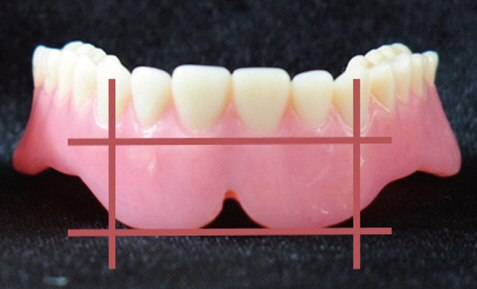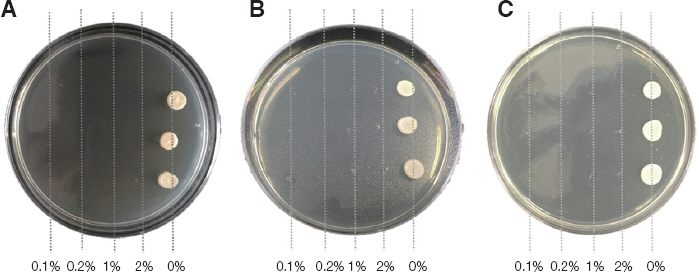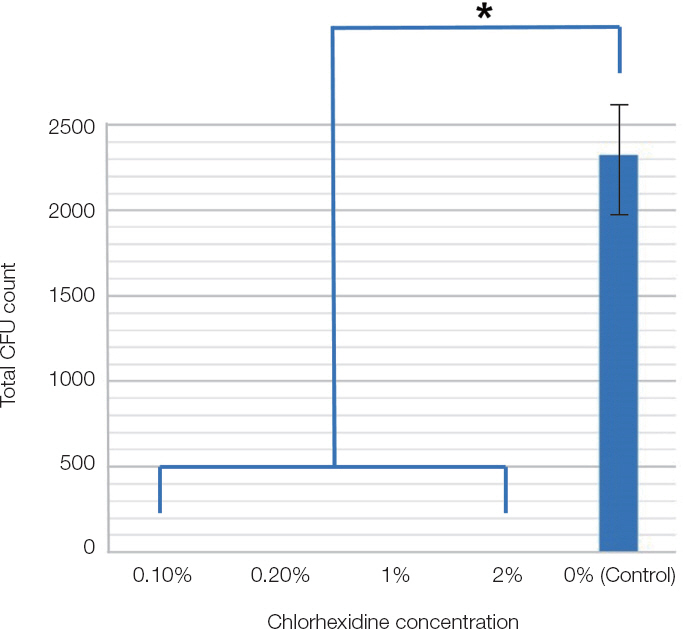J Dent Rehabil Appl Sci.
2016 Dec;32(4):274-279. 10.14368/jdras.2016.32.4.274.
Prevention of Candida albicans infection in dental polishing lathe by chlorhexidine
- Affiliations
-
- 1Department of Prosthodontics, College of Dentistry, Dankook University, Cheonan, Republic of Korea. ygsong@dankook.ac.kr
- KMID: 2369067
- DOI: http://doi.org/10.14368/jdras.2016.32.4.274
Abstract
- PURPOSE
The purpose of this study was to evaluate the transmission of candida in denture by dental polishing lathe.
MATERIALS AND METHODS
Maxillary complete dentures made from the same model were infected with Candida albicans. Polishing wheels were keep in various chlorhexidine solution and distilled water for an hour. The infected dentures were polished by prepared dental polishing lathe with sterile pumice and distilled water. And then sterile maxillary complete dentures were polished with same method. Polishing surface was wiped with a cotton swab and the sample was regrown for checking Candida albicans.
RESULTS
All polishing wheel with chlorhexidine resist fungal infection. But the polishing wheel with distilled water is infected with Candida albicans.
CONCLUSION
A chlorhexidine is highly efficient in fungal infection prevention on dental polishing lathe.
Keyword
MeSH Terms
Figure
Reference
-
References
1. Koray M, Ak G, Kurklu E, Issever H, Tanyeri H, Kulekci G, Guc U. Fluconazole and/or hexetidine for management of oral candidiasis associated with denture-induced stomatitis. Oral Dis. 2005; 11:30913. DOI: 10.1111/j.1601-0825.2005.01124.x. PMID: 16120118.2. Arendorf TM, Walker DM. The prevalence and intra-oral distribution of Candida albicans in man. Arch Oral Biol. 1980; 25:1–10. DOI: 10.1016/0003-9969(80)90147-8.3. Lee GH, Song YG. Study of transmission of Candida albicans in denture by dental polishing lathe. J Dent Rehabil Appl Sci. 2014; 30:199–205. DOI: 10.14368/jdras.2014.30.3.199.4. Marples MJ, Di Menna ME. The incidence of Candida albicans in Dunedin, New Zealand. J Pathol Bacteriol. 1952; 64:497–502. DOI: 10.1002/path.1700640309.5. Budtz-Jörgensen E. The significance of Candida albicans in denture stomatitis. Scand J Dent Res. 1974; 82:151–90. DOI: 10.1111/j.1600-0722.1974.tb00378.x.6. Van den Abbeele A, de Meel H, Ahariz M, Perraudin JP, Beyer I, Courtois P. Denture contamination by yeasts in the elderly. Gerodontology. 2008; 25:222–8. DOI: 10.1111/j.1741-2358.2007.00247.x. PMID: 18665849.7. Al-Nazhan S, Al-Obaida M. Effectiveness of a 2% chlorhexidine solution mixed with calcium hydroxide against Candida albicans. Aust Endod J. 2008; 34:133–5. DOI: 10.1111/j.1747-4477.2007.00091.x. PMID: 19032650.8. Gama MC, de Oliveira DG, da Silva PM, Ordinola Zapata R, Duarte MH, Porto VC. Antifungal activity of 4% chlorhexidine and 2% sodium hypochlorite against Candida albicans biofilms. Gen Dent. 2015; 63:43–7. PMID: 26325641.9. Suci PA, Tyler BJ. Action of chlorhexidine digluconate against yeast and filamentous forms in early-stage Candida albicans biofilm. Antimicrob Agents Chemother. 2002; 46:3522–31. DOI: 10.1128/AAC.46.11.3522-3531.2002. PMCID: PMC128749.10. Bobichon H, Bouchet P. Action of chlorhexidine on budding Candida albicans : screening and transmission electron microscopic study. Mycopathologia. 1987; 100:27–35. DOI: 10.1007/BF00769565. PMID: 3317060.
- Full Text Links
- Actions
-
Cited
- CITED
-
- Close
- Share
- Similar articles
-
- Surface roughness and Candida albicans adhesion to flexible denture base according to various polishing methods
- Treatment Protocol for Secondary Burning Mouth Syndrome in Candida albicans- or Non-albicans-Positive Patients
- Chlorhexidine Anaphylaxis after Urethral Catheterization during Anesthesia : A case report
- Candida Granuloma
- A Case of Candida Glabrata Infection after Total Knee Arthroplasty





